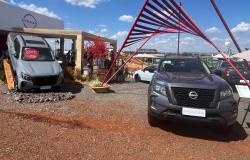Cruzeiro do Sul Educacional has the lowest leverage in the sector, grows revenue consistently above the market, and is one of the few higher education companies that has managed to expand its in-person student base.
But the market doesn’t even want to know.
The stock trades at the lowest valuation of the sector, a multiple of 3.3x EBITDA and 7.6x the estimated profit for this year.
For comparison purposes, Yduqs trades at 4.4x EBITDA and 10.3x profit, Cogna at 4.4x EBITDA and 13.3x profit, and Ânima at 3.3x EBITDA and 10.1x profit.
Cruzeiro do Sul’s discount largely has to do with the low liquidity of the paper, which trades on average at just R$2 million per day. O free float of the paper is just 12.5%, with the founding families, the Padovese and the Figueiredo, holding 23.5% each. The largest shareholder is GIC, with 40.6% of the capital.
“Cruzeiro do Sul is the most rounded company in the sector. The results are consistent and clean, it is the least leveraged and the conversion of EBITDA into cash is higher than that of competitors, which allows it to pay dividends,” said an analyst who covers the sector. “The big problem is low liquidity, which becomes even more complicated in a scenario de-risk from the market.”
Of the six analysts covering the stock, five have a ‘buy’ and one has a ‘neutral’ recommendation.
Reduced liquidity means that a fund with R$2 billion in AUM that wants to have 1% of the portfolio on paper needs 10 days to set up the position. “This fund would be linked to the paper at a time when there is a risk of regulation in EAD and medicine,” said the analyst. “If a bomb comes out, he can’t sell it.”
Cruzeiro has a certain urgency in increasing the liquidity of the share. The company is already in its third waiver granted by B3 to adapt its free float to the 20% required by Novo Mercado. O waiver current expires in June.
One follow-on It could unlock value in the stock, allowing large funds to enter the stock, but neither GIC nor families should be sellers at the current price.
“It’s a chicken-and-egg dilemma,” said another analyst. “Nobody wants to sell at that level, but the stock is unlikely to get out of that level if they haven’t done something.”
The solution to the problem could come from M&A. The union of Cruzeiro do Sul with any of the listed education companies would solve the problem of free float and create an industry leader.
A merger with Vitru, for example, would be highly complementary: while Vitru only operates in distance learning, Cruzeiro would bring an important on-site business. Furthermore, the union would solve Vitru’s own liquidity problem, allowing its largest shareholders – SPX/Carlyle and Vinci Partners – to gain an exit door.
A merger with Yduqs would allow cutting 100% of Cruzeiro’s G&A – more than R$ 200 million/year – which, at a multiple of 6x EBITDA, would generate more than R$ 1.2 billion in value for the company, not to mention in other synergies. (Yduqs is worth R$5.6 billion on the stock market; Cruzeiro, R$1.8 billion).
Cruzeiro do Sul’s actions have been experiencing a reaction in the last 12 months. After reaching R$14 in the IPO in February 2021, the stock hit a low R$2.01 in March last year; and since then it has risen 120% to R$4.55.
The increase, however, followed a repricing of the entire sector: Yduqs rose 163% in the same period, Ânima, 106%, and Cogna, 32%.
Since the beginning of the year, Cruzeiro’s stock has fallen 11%, compared to a 15% drop at Yduqs, 30% at Cogna and a 13% rise at Ânima.
Given the low liquidity, the stock appears to be detached from its fundamentals. Even with a result for the fourth quarter in line with the projections of the sellside and higher than that of competitors in the sector, Cruzeiro do Sul’s shares fell 4.8% yesterday.
In the fourth quarter, the company reported net revenue growth of 13.3%, compared to 12.8% for Yduqs, 9.2% for Ser, 7.8% for Kroton and 4.8% for Ânima.
The strong growth of top line It had to do with an increase in the average ticket, but mainly with the growth of the student base.
While all companies in the sector reported declines in their in-person student bases, Cruzeiro do Sul grew its base by 10.3% in the year, after having already grown 7% in 2022. In addition to a good level of enrollment, the The company had a re-enrollment rate of 91.2%, an increase of 3.8 points in the annual comparison.
In EAD, growth was 25.6% in the student base, with a re-enrollment rate of 78.5%.
CEO Fabio Fossen told Brazil Journal that the result is a reflection of the changes that the company carried out in 2022, when the new management created separate verticals for digital education and health education, with distinct internal and sales processes.
“We already had face-to-face health courses spread across our various universities, but we understood the market potential and explored more vacancies,” he said. “That helped a lot with the result.”
(Since taking over in September 2021, Fossen – an executive with experience at Bridgestone, Ambev and Coca-Cola FEMSA – has switched 100% of the C-Level. CFO Felipe Negrão, who arrived in 2022, worked at Bain & Co, Ibmec and GPA.)
The health vertical already accounts for 51% of students and 68% of in-person revenue — which in turn represents 70% of the company’s total revenue.
For this year, the health vertical continues to be the company’s big bet — but now, the focus will be on postgraduate courses, which are not regulated, giving universities autonomy to open new vacancies (unlike medical courses, which require MEC approval).
“Medicine, dentistry, nutrition, all aspects of health have a lot of demand for postgraduate degrees, because there are many new things happening in the field, which require constant updating,” said Fabio.
According to him, this part of postgraduate studies was never a core for the company, but the idea now is to develop further, greatly accelerating growth. “We have the infrastructure and reputation ready to grow on this front, which is something that has a lot of value in the market.”
The CEO also said that the growth of the in-person base was not related to an increase in financing — which could create problems in the future. According to him, the percentage of financing over enrollment has remained stable at 6% in recent years.
An industry analyst agrees.
“Cruzeiro do Sul is the company with the least steroids in the sector. When FIES is booming, they don’t go crazy,” said the analyst, adding that it is also the company with the highest tickets and teaching quality, along with Ânima.
“They end up attracting higher quality students, because when the ticket is higher than R$1,000 per month, the student’s father generally pays and dropouts tend to be lower.”
Pedro Arbex and Geraldo Samor






